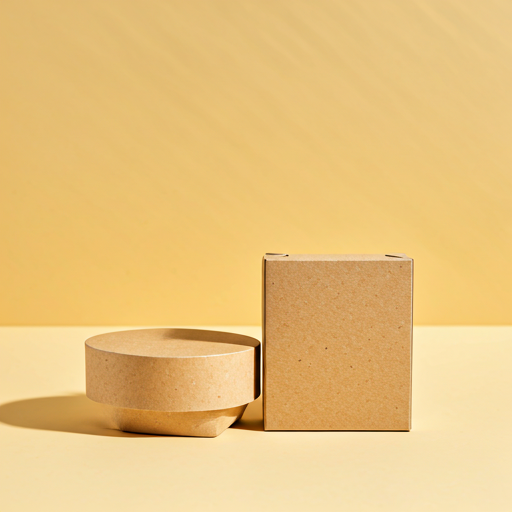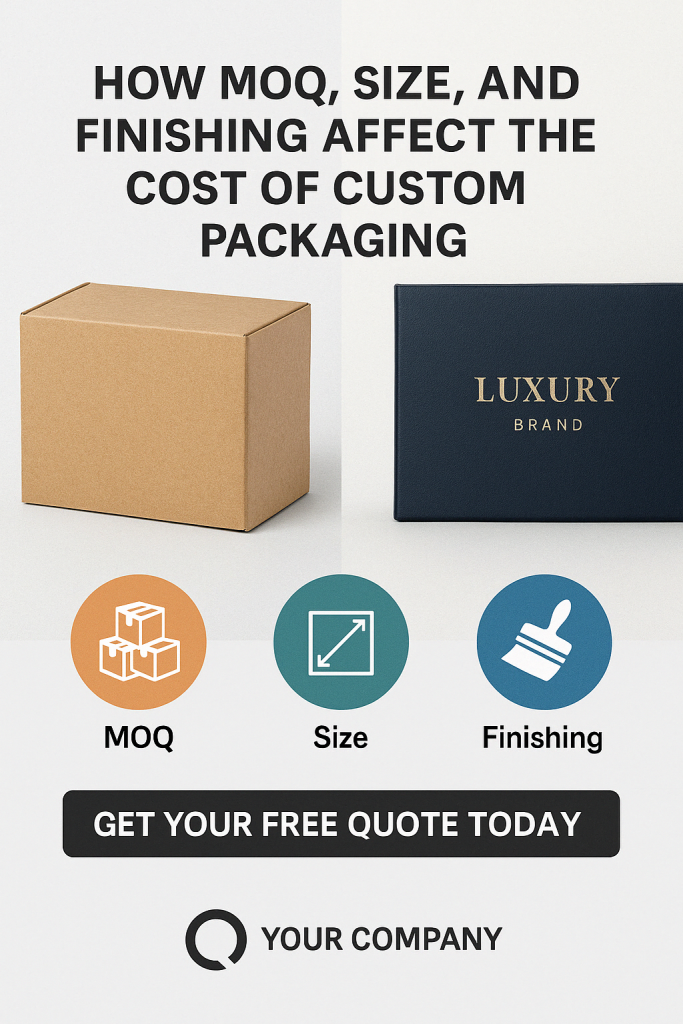In today’s world, the push for sustainability has become more than just a trend—it’s a necessity. As we strive to minimize our impact on the environment, every aspect of our daily lives, including the packaging materials we use, comes under scrutiny. Eco-friendly packaging has emerged as a viable solution to reduce waste and lessen our carbon footprint. In this article, we delve into why eco-friendly packaging matters, focusing specifically on the impact of paper boxes.
The Environmental Impact of Traditional Packaging
Traditional packaging materials, such as plastic and styrofoam, have long been staples in various industries. However, their environmental repercussions cannot be ignored.
Resource Depletion: The extraction of raw materials for traditional packaging contributes to resource depletion, putting a strain on finite natural resources.
Pollution: The production and disposal of traditional packaging materials release harmful pollutants into the environment, contaminating air, water, and soil.
Waste Accumulation: Perhaps most concerning is the sheer volume of waste generated by traditional packaging, much of which ends up in landfills or oceans, posing significant threats to ecosystems.
The Rise of Eco-Friendly Packaging
Amid growing concerns about environmental degradation, there has been a noticeable shift towards eco-friendly packaging solutions.
Consumer Demand: With increasing awareness about sustainability issues, consumers are actively seeking products packaged in environmentally friendly materials.
Corporate Responsibility: Recognizing the importance of sustainability, many companies are incorporating eco-friendly packaging into their business practices as part of their corporate social responsibility initiatives.
Regulatory Pressures: Government regulations aimed at reducing plastic usage and promoting sustainable practices have also spurred the adoption of eco-friendly packaging alternatives.
Paper Boxes as a Sustainable Packaging Solution
Among the various eco-friendly packaging options available, paper boxes have gained significant attention for their sustainability credentials.
Biodegradability: Unlike plastic, paper boxes are biodegradable, meaning they can decompose naturally without leaving harmful residues behind.
Renewable Resource: Paper is derived from renewable resources, such as trees, which can be replenished through responsible forestry practices.
Recyclability: Paper boxes are highly recyclable, making them a preferred choice for environmentally conscious consumers and businesses alike.
Advantages of Paper Boxes over Traditional Packaging Materials
The benefits of paper boxes extend beyond their eco-friendly properties, offering several advantages over traditional packaging materials.
Reduced Carbon Footprint: The production of paper boxes typically involves fewer carbon emissions compared to plastic or metal packaging, contributing to overall efforts to combat climate change.
Lower Production Energy: Manufacturing paper boxes requires less energy compared to other packaging materials, further reducing environmental impact.
Minimal Environmental Impact: From production to disposal, paper boxes leave a smaller environmental footprint, making them a sustainable choice for businesses seeking to minimize their ecological impact.
Innovative Designs and Functionalities of Paper Boxes
Paper boxes offer versatility in design and functionality, catering to the diverse needs of various industries.
Customization Options: Paper boxes can be easily customized in terms of size, shape, and design, allowing businesses to create packaging solutions that align with their branding and product requirements.
Structural Integrity: Despite being lightweight, paper boxes offer excellent structural integrity, providing adequate protection for the packaged goods during transit and storage.
Creative Branding Opportunities: With advancements in printing technology, paper boxes offer endless possibilities for creative branding, enabling businesses to stand out in a competitive market.
Case Studies of Successful Implementation
Numerous companies across different sectors have successfully adopted paper boxes as their preferred packaging solution.
Food and Beverage Industry: From fast-food chains to gourmet restaurants, many establishments have switched to paper-based packaging for takeout meals and food delivery, reducing plastic waste.
Cosmetics and Personal Care Products: Beauty brands are increasingly opting for paper boxes for their skincare and cosmetic products, appealing to environmentally conscious consumers.
E-commerce and Retail Sectors: Online retailers are embracing paper packaging for shipping products to customers, prioritizing sustainability without compromising on product protection.
Challenges and Limitations
While paper boxes offer many advantages, they also come with certain challenges and limitations that need to be addressed.
Cost Considerations: The initial cost of transitioning to paper-based packaging may be higher for businesses accustomed to using cheaper alternatives like plastic.
Durability Concerns: Paper boxes may not always offer the same level of durability as plastic or metal packaging, raising concerns about product protection, especially for fragile items.
Market Acceptance: Despite growing awareness, there may still be resistance from consumers accustomed to traditional packaging materials, necessitating efforts to educate and incentivize adoption.
Overcoming Barriers to Widespread Adoption
Addressing the challenges associated with eco-friendly packaging requires a concerted effort from various stakeholders.
Technological Advancements: Continued innovation in materials science and packaging technology can enhance the durability and functionality of paper boxes, making them more attractive to businesses and consumers.
Education and Awareness Campaigns: Educating consumers about the benefits of eco-friendly packaging and the importance of making sustainable choices can help drive demand for paper-based solutions.
Collaboration Across Industries: Collaboration between businesses, policymakers, and environmental organizations is essential for creating a supportive ecosystem that promotes the widespread adoption of eco-friendly packaging.
Future Prospects and Trends in Eco-Friendly Packaging
As the demand for sustainable packaging continues to grow, the future looks promising for eco-friendly alternatives like paper boxes.
Innovations in Sustainable Materials: Ongoing research and development efforts are focused on exploring new sustainable materials and refining existing ones to further improve the environmental performance of packaging solutions.
Circular Economy Initiatives: Embracing the principles of the circular economy, which prioritize resource efficiency and waste reduction, will drive the adoption of closed-loop packaging systems, minimizing the need for virgin materials.
Consumer Preferences Shaping the Market: Ultimately, consumer preferences will play a crucial role in shaping the future of packaging, driving businesses to prioritize sustainability and adopt eco-friendly practices.
Conclusion
In conclusion, eco-friendly packaging, particularly paper boxes, offers a sustainable solution to the environmental challenges posed by traditional packaging materials. By reducing waste, minimizing carbon








